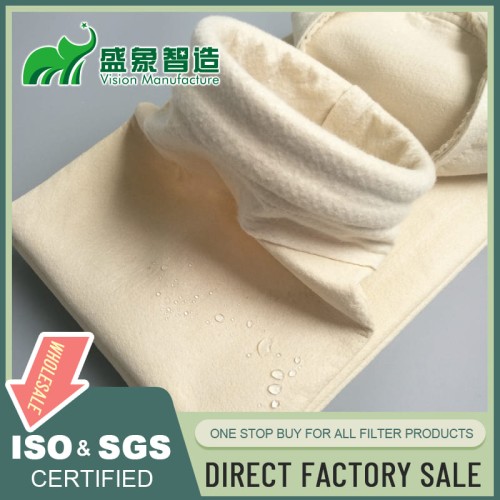
Cement Silo Baghouse: Essential Dust Collection for Cement Storage and Handling
I. Introduction
Effective dust control in cement silos is crucial for maintaining air quality and operational efficiency. This article explores the importance of cement silo baghouse systems, their role in meeting regulatory and environmental standards, and their impact on the cement industry.
Effective dust control in cement silos is crucial for maintaining air quality and operational efficiency. This article explores the importance of cement silo baghouse systems, their role in meeting regulatory and environmental standards, and their impact on the cement industry.
II. Components of a Cement Silo Baghouse
- Filter Bags or Cartridges: Capture and retain dust particles from the air stream.
- Bag Cleaning System (Pulse-Jet, Reverse Air, or Shaker): Ensures the longevity and efficiency of the filter bags by periodically removing the accumulated dust.
- Hopper and Dust Collection: Collects and disposes of discharged dust during the cleaning cycle.
- Fan and Ductwork: Facilitates the movement of air through the system, ensuring effective dust capture.
- Control System: Manages the operation of the baghouse, including cleaning cycles and monitoring performance.
III. Design Considerations
- Silo Size and Capacity: Tailored to accommodate the volume of air and dust specific to the silo's operational capacity.
- Dust Characteristics of Cement: Understanding the particulate size and properties to optimize filter selection.
- Airflow Requirements: Ensuring sufficient airflow to capture all released dust without overwhelming the system.
- Temperature and Humidity Factors: Considerations that affect the performance and selection of filter media.
- Space Constraints and Installation Logistics: Designed to fit within existing structures with minimal disruption.
IV. Types of Filter Media for Cement Silo Baghouses
- Polyester Felts: Commonly used for their durability and efficiency in capturing fine particulates.
- Acrylic Felts: Offer resistance to hydrolysis and perform well in humid conditions.
- PTFE-Laminated Fabrics: Provide high resistance to chemicals and temperature, suitable for challenging environments.
- Fiberglass Fabrics: Excellent for high-temperature applications, maintaining integrity under heat.
- Specialty Blends for Cement Applications: Customized solutions that meet specific needs of cement processing.
V. Operational Principles
- Dust Capture Mechanisms: Techniques employed to trap and retain dust within the filter media.
- Cake Formation and Release: The build-up and subsequent release of dust cake, which enhances filtration efficiency.
- Cleaning Cycles and Methods: Scheduled maintenance actions that prevent clogging and maintain airflow.
- Pressure Drop Management: Optimization to minimize energy usage while maintaining effective dust capture.
VI. Performance Factors
- Filtration Efficiency: Ability to capture a high percentage of airborne particles.
- Emissions Control: Effectiveness in reducing particulate emissions to meet environmental standards.
- Energy Consumption: Operational efficiency and its impact on overall energy use.
- Maintenance Requirements: Ease of upkeep and frequency of service interventions.
- Longevity of Filter Media: Durability of filters under continuous use.
VII. Installation Process
- Site Preparation: Ensuring the site is ready for safe and efficient installation.
- Equipment Assembly and Mounting: Accurate assembly of components to form a cohesive unit.
- Ductwork Installation: Proper alignment and sealing of ductwork to prevent leaks.
- Electrical and Control System Integration: Setup of electrical systems and integration with control mechanisms.
- Commissioning and Testing: Verification of system performance against design specifications.
VIII. Maintenance and Monitoring
- Regular Inspection Routines: Scheduled checks to identify and rectify potential issues.
- Cleaning and Replacement of Filter Media: Maintaining the effectiveness and efficiency of the filtration system.
- Performance Monitoring Techniques: Tools and methods used to assess system performance continuously.
- Troubleshooting Common Issues: Strategies to quickly address and resolve operational problems.
IX. Environmental and Safety Benefits
- Reduction of Fugitive Dust Emissions: Minimizes dust escape, improving local air quality.
- Improved Air Quality Around Cement Facilities: Enhances the environmental health of the surrounding area.
- Worker Safety Enhancements: Reduces health risks associated with dust exposure.
- Compliance with Environmental Regulations: Meets legal standards for emissions and workplace safety.
X. Cost Considerations
- Initial Investment Analysis: Assessment of upfront costs involved in system installation.
- Operational Costs (Energy, Maintenance): Ongoing expenses related to energy consumption and system upkeep.
- Potential Savings from Material Recovery: Economic benefits derived from the recovery and reuse of collected dust.
- ROI and Payback Period Calculations: Financial analysis to determine the economic viability of the investment.
XI. Innovations in Cement Silo Baghouse Technology
- Advanced Filter Media Materials: Development of new materials that offer better performance and longer life.
- Smart Monitoring and Predictive Maintenance Systems: Technologies that predict maintenance needs and optimize operations.
- Energy-Efficient Designs: Innovations that reduce power consumption while maintaining or enhancing performance.
- Integration with Silo Management Software: Systems that offer comprehensive control over silo operations, including dust control.
XII. Case Studies and Success Stories
Examples from various cement plants demonstrate how advanced baghouse systems have improved dust control, enhanced operational efficiency, and ensured compliance with environmental standards.
Examples from various cement plants demonstrate how advanced baghouse systems have improved dust control, enhanced operational efficiency, and ensured compliance with environmental standards.
XIII. Conclusion
Cement silo baghouses are essential systems that significantly contribute to dust control in cement storage and handling. With advancements in technology and increased regulatory focus on environmental health, these systems are more crucial than ever in ensuring efficient operations and compliance with health and safety standards.
Cement silo baghouses are essential systems that significantly contribute to dust control in cement storage and handling. With advancements in technology and increased regulatory focus on environmental health, these systems are more crucial than ever in ensuring efficient operations and compliance with health and safety standards.
Leave a comment

